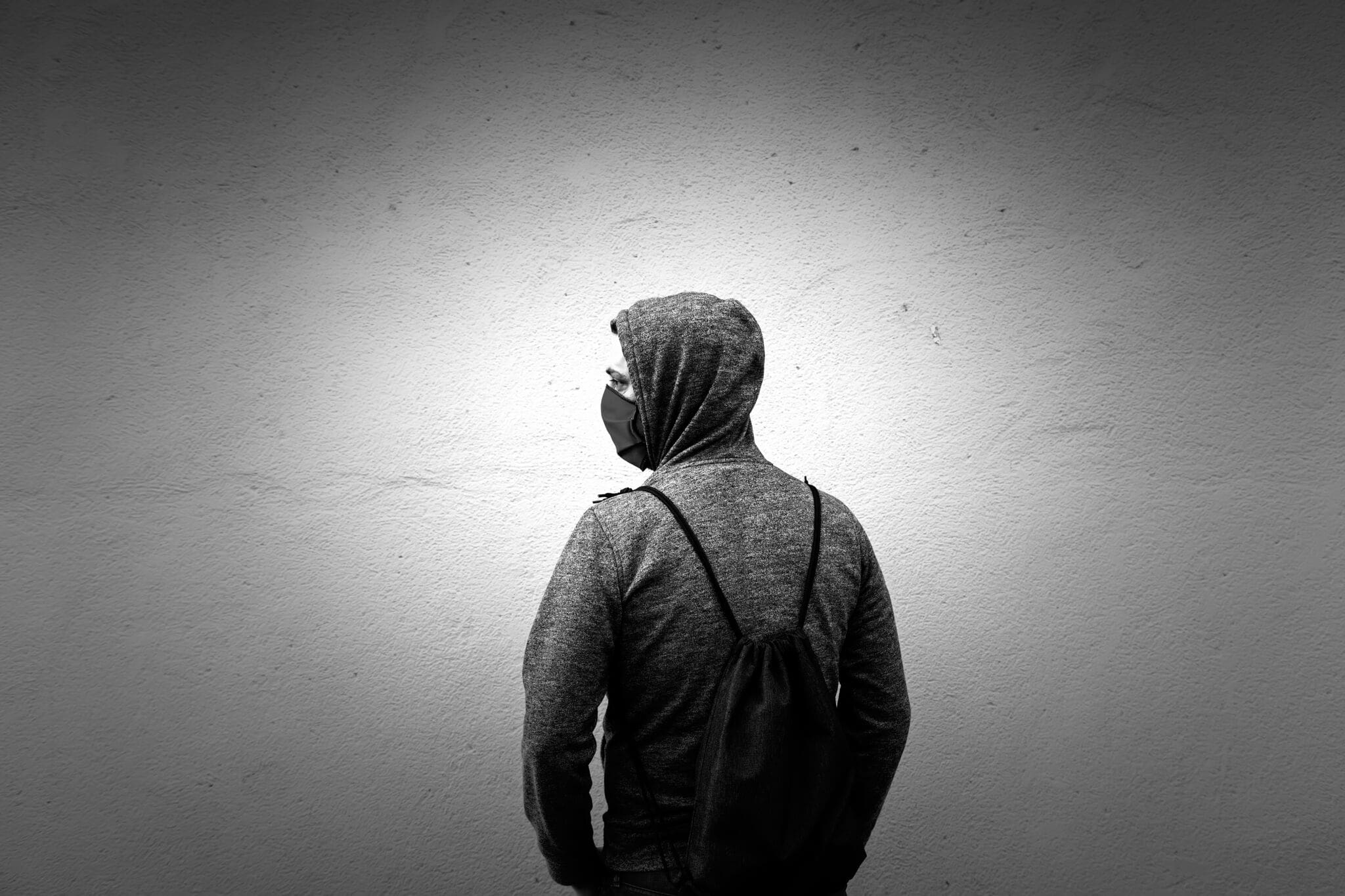In this article
Implicit bias refers to the unconscious attitudes or stereotypes that shape our thoughts, actions and decisions without our conscious awareness. These biases, often influenced by cultural conditioning, personal experiences and societal norms, can subtly but powerfully impact how we perceive and interact with others. While everyone holds implicit biases, their consequences can be far-reaching, particularly in shaping outcomes in workplaces, educational institutions, healthcare settings, police forces, and everyday social interactions.
Understanding implicit bias is crucial in today’s increasingly diverse and interconnected society. It helps us recognise how unexamined assumptions can lead to unequal treatment, missed opportunities and systemic inequities. By addressing these biases, individuals and organisations can ensure equality, inclusivity and trust.
This article will delve into the nature of implicit bias, examine their impact on individuals and institutions, and explore practical strategies to identify and counteract them. By doing so, we aim to empower readers with the knowledge and tools needed to navigate bias and promote equity in all aspects of life.
What is Implicit Bias?
Implicit biases are unconscious attitudes or stereotypes that influence our judgements, actions and decisions without us realising it. These biases stem from automatic mental processes that help the brain quickly process information and make decisions, often based on learned patterns and associations.
Implicit biases are deeply rooted in how our brains process information. From an early age, we absorb societal norms, cultural values and stereotypes through our interactions with family, peers, media and institutions. These experiences shape our mental shortcuts, or heuristics, which the brain relies on to categorise and respond to the vast amount of information it encounters. Some examples of this include:
- Socialisation – children learn gender roles, cultural norms and societal expectations from their caregivers and surroundings, which can instil subtle biases.
- Media influence – repeated portrayals of groups in stereotypical roles, e.g. women as caregivers or certain ethnicities as criminals, reinforce unconscious associations.
- Personal experiences – encounters with people or situations shape individual biases, often creating assumptions based on limited or one-sided exposure.

While these shortcuts are efficient, they can lead to unconscious generalisations or biases that affect how we perceive and interact with others.
Implicit biases differ fundamentally from explicit biases in terms of awareness and intent. These are unconscious and automatic, meaning we are often unaware of their influence on our behaviour. Implicit biases can persist even when they contradict an individual’s consciously held beliefs or values. For example, someone may value equality but still unconsciously associate leadership roles with men rather than women.
Explicit biases are conscious attitudes or beliefs that individuals knowingly hold and may openly express. For instance, someone who openly states a dislike for a particular group is exhibiting explicit bias. Implicit biases are subtle and harder to detect, but they can still lead to discriminatory behaviour, even in well-meaning individuals.
Implicit biases manifest in many areas of life, often in ways we might not immediately recognise, for example:
- Gender roles – assuming men are better suited for leadership positions or that women should naturally take on caregiving roles.
- Racial or ethnic stereotypes – associating certain racial groups with specific traits, such as assuming that Black individuals are more likely to be athletic or that Asian individuals are inherently good at maths.
- Ageism – believing that younger individuals are more tech-savvy or that older individuals are less adaptable to change.
- Socio-economic status – judging someone’s intelligence or worth based on their appearance, attire or perceived income level.
These biases can influence hiring decisions, classroom interactions, healthcare outcomes, and even criminal justice processes, possibly without the individual realising they are acting on an unconscious stereotype.
Understanding implicit biases is a crucial step in mitigating their effects. By becoming aware of their presence and examining our behaviours and decisions, we can work towards reducing their impact on our actions and creating a more equitable society.
The Impact of Implicit Bias in Different Areas
Implicit bias can significantly influence hiring and promotion decisions in the UK, often favouring individuals who share similar backgrounds or traits with decision-makers.
Research has shown that ethnic minority candidates are less likely to be shortlisted for jobs even when qualifications are equivalent to those of white applicants. Research from Nuffield College’s Centre for Social Investigation highlights persistent discrimination, where ethnic minorities need to send significantly more applications than white candidates to receive a positive response.
Similarly, women and individuals from other underrepresented groups may face barriers due to stereotypical assumptions about their capabilities or leadership potential. This perpetuates systemic inequalities and reduces diversity in senior roles.
Bias in performance evaluations can manifest as harsher scrutiny for employees from minority groups or women, while their counterparts may benefit from leniency based on positive stereotypes. For example, studies in the UK suggest that Black employees and women are often critiqued more harshly or receive less constructive feedback than their white male colleagues. This not only affects career progression but also perpetuates feelings of undervaluation and exclusion.
In education, implicit biases among teachers can shape their expectations and interactions with students, influencing academic outcomes. In the UK, Black students are more likely to face disciplinary actions and lower expectations, which can undermine their confidence and long-term achievement. Similarly, boys may be assumed to be disruptive or less studious, while girls may face biases that discourage them from pursuing STEM fields.
Educational materials often reflect implicit biases in what is included or excluded. For instance, UK school curricula have historically prioritised Eurocentric perspectives, side-lining the contributions of Black, Asian, and other minority groups. This lack of representation can perpetuate feelings of alienation among students from these backgrounds and limit opportunities for all students to gain a holistic understanding of history and culture.
Implicit bias in healthcare can lead to disparities in diagnosis and treatment. For example, Black and South Asian patients in the UK have reported feeling their pain or symptoms are dismissed by healthcare providers. Women, too, often face biases that lead to their symptoms being minimised or misdiagnosed, particularly in conditions like endometriosis or cardiovascular issues. This contributes to poorer health outcomes for these groups and undermines trust in the healthcare system.
A 2020 study published in the British Medical Journal found Black patients in the UK have experienced prejudice from healthcare professionals because of their ethnicity and the colour of their skin, and 65% of younger people also feel discriminated against saying they have experienced prejudice from healthcare professionals.
Implicit bias plays a role in the disproportionate targeting and treatment of racial minorities in the UK. Data from Statista indicates that Black individuals are significantly more likely to be stopped and searched, despite no higher likelihood of being involved in criminal activity. Such practices erode trust in the police among communities and perpetuate systemic inequities.
Judges and jurors may unintentionally allow biases to influence their decisions, leading to disparities in sentencing. For example, studies in the UK like the one from the Institute of Race Relations have highlighted harsher sentences for Black and minority ethnic individuals compared to white defendants for similar offences. This reflects broader societal biases and contributes to the overrepresentation of these groups in the prison system.

How Implicit Bias Manifests
Microaggressions are subtle, often unintentional, expressions of bias or prejudice that demean, marginalise or harm individuals from underrepresented or marginalised groups. They may be verbal, behavioural or environmental, and while they might seem minor, their cumulative impact can be deeply harmful.
Examples of these include:
- Comments about accents – asking someone where they are really from, assumes they are not a native speaker, reinforcing their otherness.
- Assumptions about intelligence – saying, “You’re actually really clever” can imply surprise at someone’s competence based on their race or background.
- Stereotypes based on appearance – suggesting a woman in a leadership role is intimidating or bossy can reflect gender biases.
- Behavioural microaggressions – avoiding sitting next to someone of a different race on public transport conveys exclusion and bias.
Implicit bias often leads to reliance on stereotypes, and generalised and oversimplified beliefs about groups of people. These can shape daily interactions and result in differential treatment, even if the individual is unaware of their bias.
Manifestations of these include:
- In the workplace – assuming a woman is less interested in a promotion because she might prioritise family.
- Education – teachers unconsciously calling on male students more frequently in maths or science discussions due to stereotypes about gender and aptitude.
- Healthcare – a doctor underestimating the severity of a Black patient’s pain, influenced by racial stereotypes about pain tolerance.
These unconscious behaviours reinforce systemic inequities, as they can affect opportunities, trust and the overall treatment of marginalised groups.
Implicit biases can lead to behaviours and actions that reinforce the very stereotypes underpinning the bias. This creates a feedback loop of inequality, where expectations influence outcomes in ways that appear to validate the original stereotype. For example, a teacher who assumes that students from a particular ethnic background are less likely to excel may give them less challenging work or less attention. As a result, these students may perform poorly, perpetuating the stereotype. Managers who assume certain employees are less capable may assign them fewer responsibilities, limiting their opportunities for growth and further reinforcing perceptions of incompetence. Individuals often internalise negative stereotypes, which can affect their self-esteem and performance, creating a cycle of bias and inequality.
Implicit bias operates subtly but powerfully, influencing interactions and decisions in ways that sustain disparities. Addressing these manifestations, through awareness, education and proactive measures, can help break cycles of bias and create inclusivity.
Recognising and Addressing Implicit Bias
Addressing implicit bias requires a multifaceted approach involving self-reflection, education and structural changes. Key strategies for recognising and mitigating implicit bias include:
Self-awareness
Recognising implicit bias begins with self-awareness. Many individuals are unaware of the biases they carry, making introspection crucial. Take time to reflect on your attitudes, behaviours and decisions. Ask yourself if your assumptions about others are based on stereotypes or facts. Maintain a journal of your interactions or seek feedback from colleagues and friends to uncover patterns in behaviour that may indicate bias. Pay attention to the emotional reactions you have towards different groups of people. For example, if you feel discomfort or excessive confidence in specific scenarios, it could point to underlying biases.
Implicit Association Test (IAT)
The Implicit Association Test, developed by researchers at Harvard University, is a valuable tool for uncovering unconscious biases. The IAT measures the strength of associations between concepts, e.g. race or gender, and evaluations, e.g. good or bad, or stereotypes. Taking the IAT can reveal biases you might not be aware of, such as associating certain roles with specific genders or ethnicities. Recognising these tendencies is the first step to addressing them. While the IAT is a helpful diagnostic tool, it is not definitive proof of behaviour. Combine it with other self-assessment methods for a well-rounded understanding.
Education and training
Organisations and individuals benefit significantly from ongoing education and structured training programmes aimed at reducing bias. Diversity and inclusion training provides foundational knowledge about cultural differences and how biases develop. These sessions help participants recognise and counteract their biases through practical tools and strategies, and encourage reading, attending talks, and engaging with media that highlight diverse perspectives. Understanding systemic inequities can contextualise personal biases.
Building diverse relationships
Interacting with people from different backgrounds is one of the most effective ways to challenge stereotypes and reduce biases. Actively seek out relationships with individuals from diverse cultures, races, genders and professions. Open conversations about experiences and perspectives can dismantle preconceived notions. Regular exposure to diversity, whether in friendships, workplaces or community settings, can gradually reshape implicit attitudes.
Mindful decision-making
Biases often influence decisions without our awareness. Mindfulness can help counteract this. Before making a decision, ask yourself whether stereotypes or assumptions are influencing your thought process. Create a personal checklist to ensure decisions are based on objective criteria rather than subjective feelings and put yourself in others’ shoes to understand how decisions may affect them, particularly those from marginalised groups.
Organisational changes
Institutions play a critical role in addressing implicit bias through structural and procedural reforms. Remove identifying information, e.g. names and genders, from application forms to prevent unconscious biases during hiring. Use standardised questions for all candidates to ensure fair comparisons based on qualifications rather than personal impressions. Develop clear, measurable benchmarks for evaluating employees, candidates or projects to reduce reliance on subjective judgement. Encourage leaders to model inclusive behaviour and hold them accountable for creating equitable environments.
Recognising and addressing implicit bias is an ongoing journey that requires commitment, self-reflection and active engagement. By combining individual efforts with organisational strategies, it is possible to create a more equitable and inclusive society.
Long-Term Solutions and the Role of Society
Addressing implicit bias and creating a more equitable society requires a comprehensive approach that targets societal norms, institutional practices and individual attitudes over the long term.
Implicit bias is deeply rooted in societal norms and cultural frameworks. Therefore, reducing it requires a long-term cultural shift that reshapes how we view and treat each other. This shift can be achieved through:
- Open conversations – creating spaces for honest discussions about bias and prejudice is critical. These conversations should take place in schools, workplaces and communities, facilitated by trained individuals to ensure inclusivity and respect. Dialogues that focus on lived experiences can challenge preconceived notions and encourage empathy.
- Education – educating individuals about the nature of implicit bias, how it operates, and its impact on decision-making is vital. Schools can incorporate curricula that teach cultural competency, critical thinking about stereotypes, and historical context about marginalised groups. Public campaigns can also raise awareness on a larger scale.
- Institutional accountability – institutions must commit to creating inclusive environments by assessing their practices and outcomes. For example, having regular diversity and inclusion training tailored to specific organisational challenges, mechanisms for reporting and addressing instances of discrimination or bias, and leadership commitment to equity as a core value, with transparent goals and metrics.
Cultural shifts take time and sustained effort but are essential for dismantling the systemic roots of bias.

One of the most effective ways to challenge stereotypes and reshape societal biases is through diverse and authentic representation in various aspects of public life, including:
- Media representation – the portrayal of diverse characters in media, television, film, literature and advertisements helps to normalise inclusivity and counter stereotypical narratives. Authentic storytelling that reflects the experiences of underrepresented groups creates empathy and broadens perspectives.
- Leadership positions – increasing diversity in leadership roles including political, corporate and academic, challenges implicit assumptions about who is fit to lead. Visible role models from diverse backgrounds inspire others and contribute to a more inclusive standard of success. Diverse leadership also ensures a variety of perspectives in decision-making, promoting equity in policies and practices.
- Public spaces and institutions – celebrating diverse cultures through public art, historical monuments and community events creates a sense of belonging for all groups. Educational institutions can actively work to hire diverse faculty and promote inclusive curricula, influencing the perspectives of future generations. The visibility of diverse individuals in positions of influence and public roles plays a transformative role in redefining societal norms and expectations.
- Policy and legislation – while cultural changes address attitudes and perceptions, policy and legislation are essential for structural change, providing a framework that reinforces fairness and equity. Effective policies enforcing laws that prohibit discrimination based on race, gender, religion, sexual orientation, and other factors in workplaces, schools, housing and public services are foundational to reducing systemic bias. Strengthening the legal framework ensures accountability for organisations and individuals who perpetuate bias. Equity-focused initiatives where policies are aimed at reducing systemic inequality, such as affirmative action in education and hiring, help level the playing field for marginalised groups. Addressing economic disparities through equitable access to healthcare, education and social services ensures that no group is disproportionately disadvantaged.
- Bias mitigation in public systems – implementing training and accountability mechanisms in law enforcement, healthcare and judicial systems can reduce disparities in treatment and outcomes for marginalised groups. Regular audits and evaluations of institutional practices ensure that policies are effectively addressing inequities. Policy and legislative efforts create the structural foundation for addressing bias while signalling a societal commitment to fairness.
While each of these strategies contributes uniquely to addressing implicit bias, their effectiveness is amplified when they are implemented together. Cultural shifts create the societal will for change, representation challenges stereotypes and normalises diversity, and policies institutionalise equity and provide accountability mechanisms. Society as a whole must work collaboratively across sectors, including education, media, government and community organisations, to ensure these solutions are sustained over time.
Conclusion
Implicit biases are an intrinsic part of human cognition, shaped by our experiences, cultural norms and societal influences. While these unconscious attitudes and stereotypes operate outside our immediate awareness, their impact can be profound, affecting decision-making, relationships and societal structures.
Recognising and addressing implicit biases is not just a personal challenge but a collective responsibility essential for creating equity and inclusion. Through increased self-awareness, education and intentional action, individuals and organisations can mitigate the effects of implicit biases, promoting fairer outcomes and more diverse perspectives. Ultimately, understanding and managing these biases is a crucial step towards creating a more just and empathetic society.






